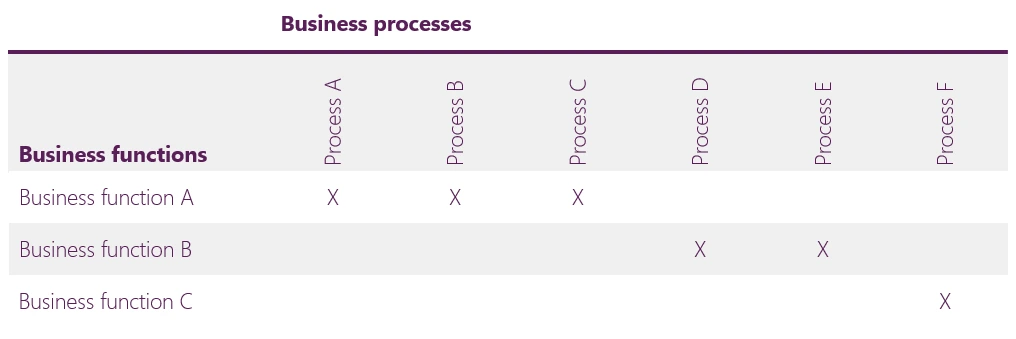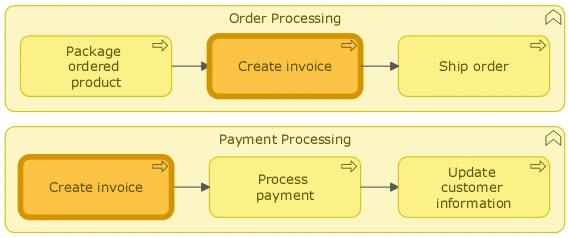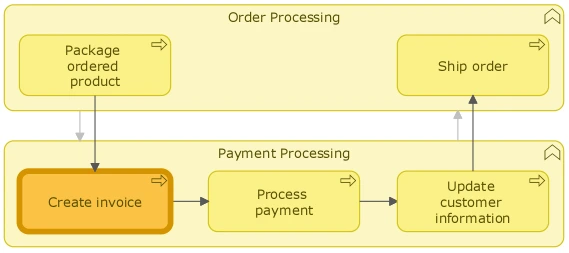Once a Business Process Map is in place, it can be combined with other elements to gain additional insight. By cross-mapping the processes from the Business Process Map to the business functions captured, the relationship between the business functions and the business processes can be visualized in a Business Function/Business Process Matrix.
A cross-mapping is a relationship between two variables that shows the cause-and-effect relationship between them.
From a Business Function/Business Process Matrix, it is easy to see where there is overlap in the use of processes. Ideally, a business process should not be used in more than one business function. Processes that do appear in multiple business functions may need to be reviewed. These overlapping processes may not be described with sufficient clarity or detail so it appears as if they belong to multiple business functions.
A business function can consist of multiple business processes, but none of the processes should be part of multiple business functions. Of course, it is possible for a process in a given business function to call another process. In this case, the called process may be in a different business function.

The Business Function/Business Process Matrix should be used primarily to provide an insight into overlapping processes. It is these processes that should be brought to light.
Example
An example of overlapping processes is shown below. The situation is that of an organization that sells products to customers. Customers can order products, after which the product is packaged, an invoice is prepared, and the product is shipped. In parallel, payment for the order is processed and customer information is updated with the order information.

In the example, the Create Invoice process appears to exist in both the Order Processing and Payment Processing business functions. In reality, after the order is packed, the Payment Processing business function is triggered and the Create Invoice process is called. It is the Payment Processing business function that actually contains the Create Invoice process. Creating an invoice is more logically located in the second business function than in the first. This is because the first business function is about handling an ordered product, while the second is about handling it administratively.

By looking closely at the process steps of the overlapping processes in the Business Function/Business Process Matrix, the unevenness can be smoothed out.
More information
For additional information about creating a Business Function/Business Process Matrix, please refer to Chapter 8, Section 8.2.1.2, of my book Getting Started with Enterprise Architecture.
